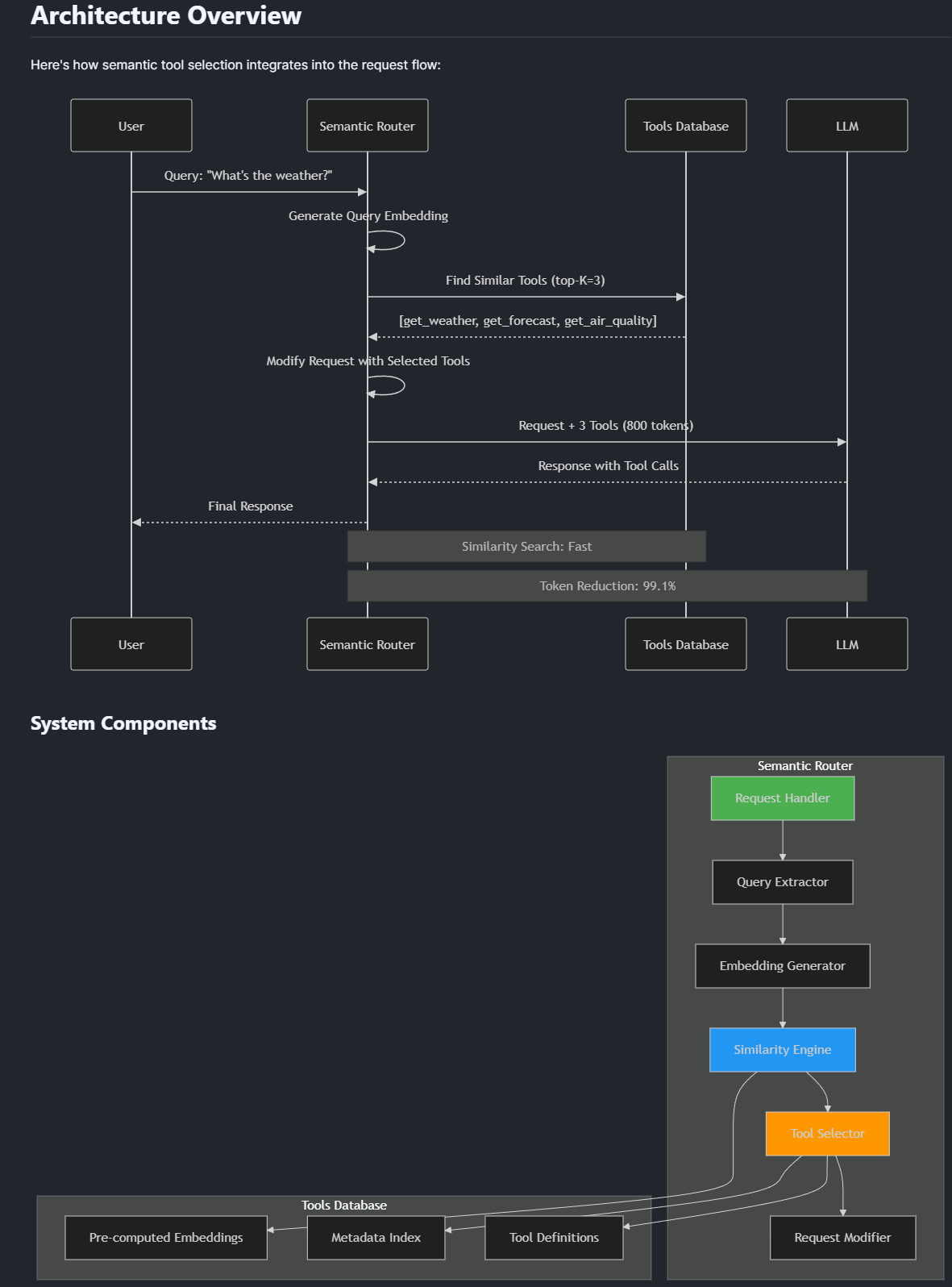Modern AI agents are integrating with rapidly expanding tool catalogs, sometimes numbering in the hundreds or thousands. This growth, while promising, introduces a substantial challenge: how can agents efficiently identify which tools are relevant for each user query?
Loading every available tool for each request causes "context window bloat," draining resources, inflating costs, and sharply reducing accuracy. Research highlights that as catalog size increases, model performance can plummet with accuracy dropping from 78% with 10 tools to just 13% when faced with over 100 tools. Position bias, where important tools are buried and overlooked, further compounds this issue.
Semantic Tool Selection: A Smart Solution
The vLLM Semantic Router addresses these bottlenecks through semantic tool selection. Rather than overwhelming the model with every tool, this approach filters and forwards only those most relevant to each query, determined by semantic similarity. This targeted selection slashes prompt size, eliminates position bias, and recovers accuracy, even as catalogs scale to the thousands.

How Semantic Selection Works
- Tool Embeddings: Each tool is encoded as a vector, leveraging detailed descriptions and optional metadata.
- Query Matching: Incoming queries are embedded and compared to tool vectors using cosine similarity.
- Top-K Selection: Only the most semantically relevant tools, those exceeding a set similarity threshold, are injected into the LLM's context, cutting token usage by over 99% in large catalogs.
Results That Matter
Extensive benchmarks validate semantic selection's impact. With catalogs of 741 tools, loading all tools causes catastrophic accuracy loss in most open-source models, sometimes up to 100%.
Semantic tool selection reverses this trend, boosting accuracy from 13.6% to 43.1% in challenging environments like RAG-MCP benchmarks. Enterprises benefit as token usage per request drops from 127,315 to just 1,084, unlocking annual cost savings that can exceed $3.7 million for high-volume deployments.

Semantic selection makes large-scale tool calling possible.
Key Advantages
- Usability at Scale: Maintains high accuracy and performance, even with massive tool catalogs.
- Token and Cost Efficiency: Reduces prompt size and operational expenses by over 99%.
- No Position Bias: Ensures fair, relevance-based tool access, improving decision quality.
- Enables Open-Source Models: Restores the viability of open-source LLMs at scale, no longer restricting large catalogs to proprietary models only.
- Future-Proof Scalability: As tool ecosystems expand, semantic selection remains essential for operational excellence.
Comparing Approaches
Semantic tool selection stands out against traditional strategies:
- Versus Loading All Tools: Achieves over 3x accuracy improvement and drastic prompt reduction.
- Versus Manual Categorization: Requires less upkeep, adapts to evolving catalogs, and manages cross-domain queries more robustly.
- Versus Code Execution: Semantic selection is complementary, streamlining discovery while code execution manages workflow complexity and further data filtering.
Looking Forward
As tool catalogs keep growing, research points toward hierarchical retrieval, smarter response management, and multi-turn optimization to sustain relevance and efficiency. Automated validation will also be crucial to ensure high-quality tool selection at scale, supporting the next generation of robust, responsive AI agents.
Takeaway: Smarter Tool Discovery Drives AI Progress
The future of AI agents relies on intelligent, context-aware tool discovery. Semantic tool selection, as demonstrated by the vLLM Semantic Router, revolutionizes agent efficiency and scalability.
By filtering for relevance before invoking the model, organizations benefit from lower costs, restored accuracy, and broader adoption of both proprietary and open-source AI solutions. Combined with code execution, semantic selection is paving the way for the next era of scalable, high-performing AI agents.


Solving Tool Overload in AI Agents with Semantic Selection